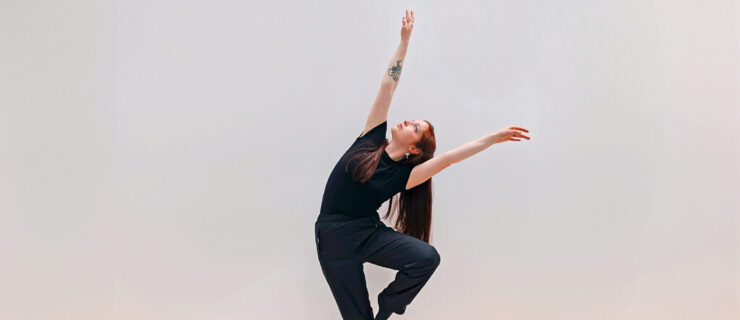Acupuncture for Dancers: What to Expect, and How It Works
Acupuncture has proven benefits for reducing pain and getting dancers back on their feet, but it’s also a way to treat your overall well-being—in both mind and body. “Acupuncture works very holistically,” says Cassandra Krug, licensed acupuncturist at the Acupuncture Clinic of Boulder, in Boulder, CO. “Even if you come in because of ankle pain, we’re looking at your whole body. We’re trying to return you to a place of homeostasis, or balance.”
Peter Schmidt, a licensed acupuncturist who works with Pacific Northwest Ballet dancers, thinks that acupuncture—when combined with the work of dancer-friendly Western doctors, physical therapists, and orthopedists—results in a higher success rate for his patients. “Acupuncture can’t address everything,” he says. “But for things that are bothering you that don’t show up on an X-ray or MRI, acupuncture could help.” Is acupuncture right for you? We talked to the experts to find out what dancers should know before going under the needle.
 Thinkstock
Thinkstock
What Is Acupuncture?
Acupuncture is the use of very fine needles to stimulate healing in the body. And though it’s a newish concept to a lot of people, it’s actually been part of Chinese medicine for thousands of years. “Chinese medicine has eight branches, including massage and herbal medicine,” says Steve Pang, a NYC–based licensed acupuncturist who has treated dancers extensively since 2005. “Acupuncture is one of those branches.”
Schmidt describes acupuncture as a way of working with the body’s natural intelligence. “As we go through life, there’s emotional and physical injury and trauma,” he says. “Acupuncture helps the body heal itself.”
Pang adds that when he treats dancers, he often sees immediate pain reduction, thanks to acupuncture’s ability to release muscle spasms and increase circulation. “Acupuncture will also reduce inflammation, which can contribute to stiff joints. You may have better range of motion after acupuncture,” he says.
How Does It Work?
The jury is still out on exactly how acupuncture works, but there are two ways to think about it: a traditional Chinese medicine perspective and a Western biological medicine perspective.
The traditional explanation for acupuncture is that needles are inserted along lines of energy in the body, called meridians, which connect to major organs. Sometimes energy, or qi (pronounced “chee”), gets stuck along the meridians, which is how illnesses and pain are thought to arise. “I tell my patients to imagine the body as a river,” Krug says. “There could be many different reasons why water flow in a river is abnormal. Maybe there’s a log blocking the river.” According to acupuncturists, the same things can happen to the energy in your body. Krug says that acupuncturists will look for things like inflammation or scar tissue, which block qi.
Many Western practitioners see traditional acupuncture points not as lines of energy but as spots to stimulate nerves, muscles, and connective tissue, releasing natural painkillers (like endorphins and adenosine) and increasing blood flow. “For the purpose of dance medicine, acupuncture stimulates metabolic activity, releases tight muscles, and regulates circulation,” Pang says. Topical treatments and pharmaceuticals can do the same, but “these are hard on the body and have repercussions over time,” Schmidt says. “Acupuncture gently brings the body back to its natural state of health.”
What to Expect
Your first acupuncture appointment will be similar to your first visit with a new pediatrician: You’ll talk about your medical history and what brought you into the office. But there’ll be a few notable differences. Your acupuncturist will look at your tongue (to check the functioning of your digestion and lymphatic system) and feel the pulse in your wrist. She’ll also ask detailed questions about your digestion, sleep patterns, and eating habits. “We’re looking for underlying deficiencies,” Krug says. Your acupuncturist will then devise a treatment intended to nudge your body back toward healthy homeostasis.
During your visit, you’ll lie on a padded table and your acupuncturist will insert superthin needles—finer than a hair—into your skin. It might feel like a tiny sting or mosquito bite, but pain or discomfort from the needle shouldn’t last. As the treatment starts to work, you might feel a tingling sensation. This is your body responding to stimulation. Don’t be surprised if your acupuncturist places needles away from where you’re feeling pain. Because she’s looking at your mind and body as a whole, she’s thinking about many different things that could contribute to your discomfort.
Be sure to ask your acupuncturist how many treatments she thinks you’ll need, and be aware that not all medical insurance covers acupuncture. A chronic injury could require many treatments; for body maintenance, you may decide to get acupuncture less frequently.
A version of this story appeared in the September 2017 issue of
Dance Spirit with the title “Moving The Needle.”




